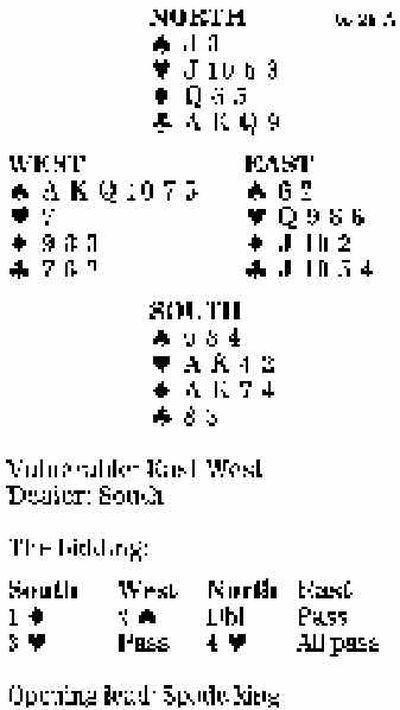Bridge

When not playing bridge, or his first love, golf, Larry Cohen is a keen reporter. Here, from his Web site, Larryco.com, is a deal that he spotted from the 2003 Fort Wayne, Indiana, Regional.
Against four hearts, West leads three rounds of spades, East showing a doubleton. What is your plan?
With no further side-suit losers, you should focus on the trumps. If they are 3-2, you have no problems. If hearts are 5-0, you have no hope. What if they are 4-1? If you ruff with dummy’s heart jack and East obliges by overruffing, you can win any return, draw trumps and claim. But if East refuses to overruff, you will have to lose two trump tricks because East would remain with two natural trump winners poised over dummy’s heart 10.
Could you have done anything about this? Yes. Don’t “waste” dummy’s trump jack at trick three. Simply ruff low; now, a 4-1 heart break won’t hurt you. Suppose East discards. You run the heart jack next. Conversely, if East overruffs at trick three with a trump spot, you can cash the heart ace and later finesse, picking up East’s original holding of four to the queen.
Is there a downside? Yes. In the unlikely event that West (the pre-emptor) has the doubleton or tripleton heart queen, you will go down in embarrassing fashion. But what is more likely: that the pre-emptor has the guarded heart queen, or that your RHO started with four hearts to the queen? Surely, the latter.
Bid with the aces
South holds:
| •6 2 | |
| •Q 9 8 6 | |
| •J 10 2 | |
| •J 10 5 4 |
| South | West | North | East |
| 1 • | Dbl. | ||
| ? |
Answer: Jump to three hearts, showing a pre-emptive raise. This may seem extreme, but it is very much the accepted style nowadays to use a two-no-trump bid in this sequence as a limit-raise (a convention named “Jordan”) and to use the jump-raise as pre-emptive. This hand may be minimum, but it is within the appropriate parameters for that action.